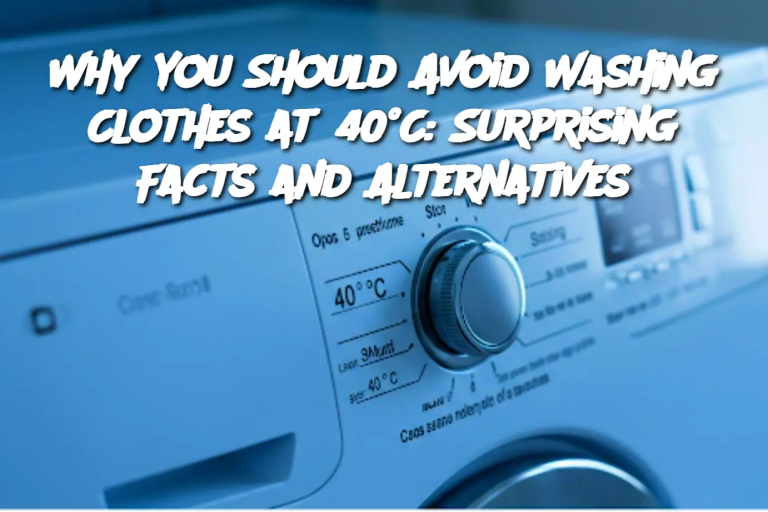ADVERTISEMENT
(Alternatives to 40°C Wash)
Cold Wash (30°C): A gentle, eco-friendly option that still gets the job done for lightly soiled clothes.
Hot Wash (60°C): Ideal for washing towels, sheets, and underwear, ensuring hygiene and stain removal.
Wool and Delicates: Use special wool or delicate wash cycles at 20–30°C to protect fabrics while ensuring they’re still clean.
Eco Mode: Many modern washing machines feature an “Eco Mode,” which reduces energy consumption while still cleaning your laundry efficiently, often at temperatures lower than 40°C.
Frequently Asked Questions
Q: Is washing at 30°C enough for cleaning my clothes?
A: Yes, washing at 30°C can clean most lightly soiled items, and it's an eco-friendly choice that saves energy and helps preserve your clothes' lifespan.
Q: Can I safely wash towels at 30°C?
A: While towels can be washed at 30°C, it’s recommended to wash them at 60°C to ensure that any bacteria or germs are killed.
Q: How do detergents work at lower temperatures?
A: Modern detergents are designed to work efficiently at lower temperatures by using enzymes that break down stains without the need for hot water.
Q: Does washing clothes at higher temperatures damage colors?
A: Yes, washing clothes at higher temperatures, especially for brightly colored fabrics, can cause them to fade more quickly. Lower temperatures help retain color integrity.
Q: How do I prevent shrinkage when washing at 40°C?
A: To prevent shrinkage, always check fabric care labels and avoid using 40°C for delicate fabrics. Lower temperatures and air-drying are often the best options for preventing shrinkage.
By understanding the effects of washing at 40°C, you can make informed choices that benefit both your clothes and the environment. Consider experimenting with lower temperatures and specialized detergents to optimize your laundry routine!
ADVERTISEMENT
